How to grow Pineapple pumpkin with amazing sweet taste and pleasant aroma on your plot
Pineapple pumpkin got its name for its bright sweet taste. Such a product will never be superfluous in the kitchen: excellent snacks are prepared from the vegetable, added to porridge and frozen for the winter.
This variety is extremely rare on supermarket shelves, so summer residents prefer to grow it on their own. This is not difficult to do, especially since Pineapple Pumpkin is easy to care for and does not require much attention. Consider further what tricks summer residents use to get a rich harvest.
The content of the article
Description of the variety
Pineapple belongs to the nutmeg varieties, which are valued for their high taste and tender pulp... Butternut squash is usually large, yellow or orange in color. The vegetable is mid-season, ripens in about 110 days from the moment of planting.
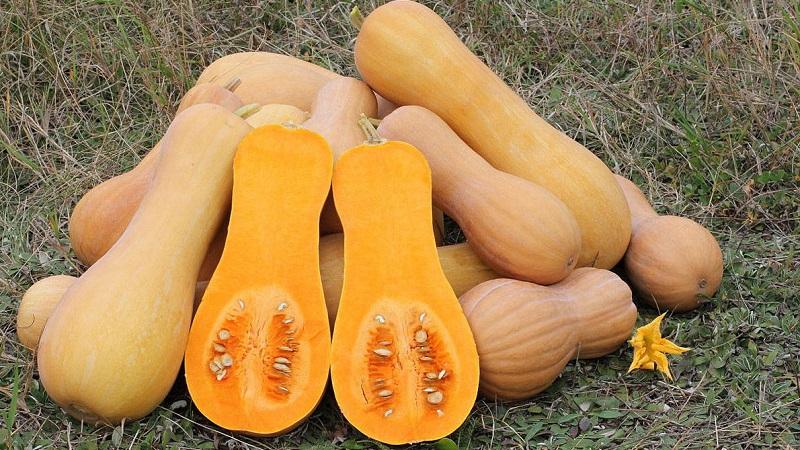
F1 hybrid
Pineapple Pumpkin Has Good Disease Immunity... Thanks to the efforts of agronomists, a hybrid vegetable combines all the best. Pineapple is planted mainly in the southern regions of the country.
For cultivation in the middle lane and in the north, film shelters or greenhouses are necessarily used. The hybrid is picky about the composition of the soil, it shows the best result in sandy loam, loose and fertile soil.
Read also:
Distinctive features
Bushes of medium height, lashes are long, sometimes they grow up to 3-4 m... The plant has a classic green color, leaves are wide and slightly rough. The roots are powerful and developed. Due to the long lashes, it needs mandatory formation and pinching. Planting Pineapple is recommended in a seedling way.
Pumpkin characteristics and yield
One lash forms about 4-6 vegetables at once... The color is delicate, creamy orange. The weight of one pumpkin is about 2.5 kg. Maturation and return are friendly. The pulp, like most nutmeg varieties, is thick and firm.
The taste is sweet, nutmeg, gives off a subtle aftertaste of nuts. Vegetables have excellent keeping quality, they are perfectly stored. They are highly regarded in cooking and cosmetology. From 1 sq. m summer residents receive about 4-5 kg of delicious and beautiful pumpkins.
Interesting! The weight of the largest pumpkin in the world was 1190 kg. A farmer from Belgium managed to grow a giant in 2016. An unusual achievement is listed in the Guinness Book of Records.
How to grow
Pumpkin is an easily cultivated plant... It is planted in two ways, which we will discuss below, and also consider the basic agrotechnical rules for caring for a crop.
Planting with seeds
First, we advise you to select high-quality material... Such seeds will show greater germination and will be better protected from dangerous microorganisms. To improve these qualities, disinfection is carried out. One way is to treat the seeds with formalin. You will need 300 g of warm water and 3 g of formalin 40%.
For convenience, place the seeds in a cloth bag and soak them in the solution for five minutes. Take out the bag, leave it on the table for 1-2 hours, then take out the seeds and dry them well from all sides. The method is affordable, takes little time and is safe.
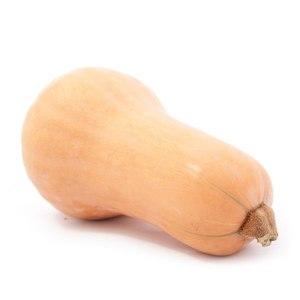 The processed seeds are tested for germination. For this they are germinated. The temperature of the water for germination should be no more than 55 degrees.Soak the seeds in the liquid for three hours, then wrap them in slightly damp gauze. Germination will show the number of shoots and those seeds that are ready to be planted in the ground. Just throw the rest away.
The processed seeds are tested for germination. For this they are germinated. The temperature of the water for germination should be no more than 55 degrees.Soak the seeds in the liquid for three hours, then wrap them in slightly damp gauze. Germination will show the number of shoots and those seeds that are ready to be planted in the ground. Just throw the rest away.
Both for planting with seeds and for the seedling method, it is necessary to prepare the beds... Plant a crop after legumes or potatoes: this way the risk of contracting dangerous diseases is much lower. Dig up the ground and pour it with potassium permanganate solution. Also, fertilize the soil with a mixture of humus and shavings before sowing. This composition accelerates plant growth and strengthens the immune system.
For 1 sq. m place no more than one bush... Pineapple has a large root system and requires a lot of space. Avoid dense plantings, this will negatively affect the amount of the crop. Pineapple loves space and light, so choose a calm, fertile area for it.
Important!Do not plant squash after squash or squash.
Seedling method
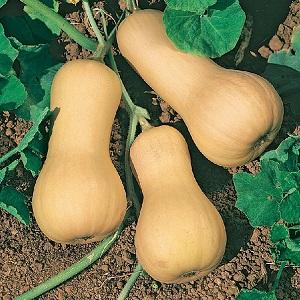 For seedlings, seeds also need to be selected, disinfected and germinated. After that, prepare the soil and container... As a soil, we recommend using ready-made compounds that do not need additional processing. But it is also not forbidden to independently prepare a mixture of soil from the garden, peat, humus and river sand in a ratio of 4: 1: 1: 1. After mixing all the components, a nutritious and useful soil for pumpkin is obtained, which is pre-disinfected with a solution of potassium permanganate.
For seedlings, seeds also need to be selected, disinfected and germinated. After that, prepare the soil and container... As a soil, we recommend using ready-made compounds that do not need additional processing. But it is also not forbidden to independently prepare a mixture of soil from the garden, peat, humus and river sand in a ratio of 4: 1: 1: 1. After mixing all the components, a nutritious and useful soil for pumpkin is obtained, which is pre-disinfected with a solution of potassium permanganate.
Seedlings are grown in flower pots, wooden boxes and even in kefir cardboard boxes... The main thing is that the container is clean and dry. The seedlings are stored in a warm and bright place, for example, on a windowsill. Water every seven days. Two weeks later, the first feeding with wood ash or liquid bird droppings is organized.
Seedlings are transferred to the site in the early morning on a calm day... When transplanting, it is important not to damage the roots and stems that have not yet matured. After sowing, be sure to water the soil with warm water.
Care
The main care is the timely watering of the crop... The procedure is carried out every 5-7 days, the water temperature should be at least 20 degrees. They water the bushes early in the morning or late in the evening, when the sun has already disappeared behind the horizon. This is to avoid sunburn. On average, one pineapple bush takes about 2 liters of water.
Also, do not forget to organize feeding in a timely manner.... The vegetable loves both mineral and complex fertilizers. An excellent tool for accelerated plant growth is the "Zdraven" complex or the "Magic Watering" drug. They are equipped with all the necessary vitamins and minerals that nourish the pumpkin and improve the quality of the harvest. The beds are fertilized every two weeks, alternating organic matter and minerals.
An important event is loosening the earth, which is carried out every week.... A hard crust forms in the upper layer, which makes it difficult for oxygen to reach the roots. Because of this, the plant begins to hurt. Loosening improves air exchange in the soil, helps to retain moisture for as long as possible.
Features of cultivation and possible difficulties
Pineapple needs to be shaped, which often raises many questions for novice gardeners. In fact, there is nothing difficult in the formation of lashes, the main thing is to do everything in order:
- when the length of the main stem is 1.5 m, pinch it;
- after the formation of 1-2 pumpkins on one lash, cut off the stepsons to prevent the formation of new vegetables;
- leave only lateral processes at least half a meter long.
If pumpkin is not formed in time, many small vegetables will form on it.who will not be able to receive an equal amount of nutrients and will die. During the formation of the beds, they are watered with exceptionally warm water, and the top dressing is organized mainly organic.
About other pumpkin varieties:
Features of growing gymnosperms pumpkin
Tips from experienced gardeners
Gardeners across the country use secrets and mutual advice when growing Pineapple.
This is what experienced summer residents recommend to novice gardeners:
- do not sow old seeds, as they do not yield a good harvest;
- when germinating the material, use growth stimulants;
- it is better not to water the small ovary, otherwise long lashes and leaves will grow, and the pumpkins will remain small;
- lay straw on the beds before planting - it will lower the acidity of the soil;
- do not forget to remove weeds, as these plants live off useful crops;
- if the lashes are too long, put them on the garden bed and sprinkle them with earth on top;
- do not use cold spring water for irrigation;
- if the pumpkins are heavy, build an additional support for them from available tools;
- Whenever possible, use a drip irrigation system that controls water flow and moisturizes the roots rather than leaves and stems.
Diseases and pests
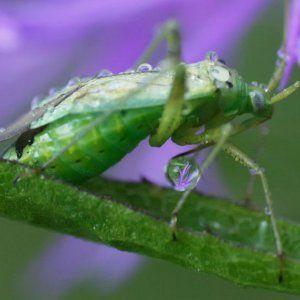 During flowering and fruiting, special attention is paid to preventive measures and protection against diseases.... There is an increased risk of anthracnose contamination, which appears as yellow-brown spots on the leaves. After the disease, vegetables lose their taste and become unusable.
During flowering and fruiting, special attention is paid to preventive measures and protection against diseases.... There is an increased risk of anthracnose contamination, which appears as yellow-brown spots on the leaves. After the disease, vegetables lose their taste and become unusable.
Treatment with ash or Epin helps to protect against anthracnose. Also, do not forget to remove weeds and maintain the optimal moisture level for the crop, as often it is the excess of water that becomes the root cause of the appearance of diseases.
Of all diseases, bacteriosis causes the greatest harm.... Brown ulcers appear on the plant, which can be eliminated with a solution of copper sulfate. It is recommended to treat the bushes with liquid immediately after the first symptoms are detected.
Among insects, the whitefly and aphids are most often affected by Pineapple.... Pests suck the sap from the plant, causing the bushes to wither. Fight insects by spraying with ash or yeast. Procedures are carried out every 20 days in the early morning.
Harvesting and application of the crop
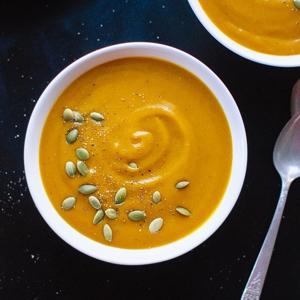 The first crop is harvested in mid-September... Vegetables must be picked with a dry stalk, otherwise they will quickly deteriorate and lose their value. Pineapple can be stored well: just place it in the refrigerator or on the balcony. Fruiting continues until mid-October.
The first crop is harvested in mid-September... Vegetables must be picked with a dry stalk, otherwise they will quickly deteriorate and lose their value. Pineapple can be stored well: just place it in the refrigerator or on the balcony. Fruiting continues until mid-October.
Thanks to its beneficial composition, pumpkin is used to strengthen the immune system.... It contains vitamins B, A and C, as well as magnesium, phosphorus and a large amount of fiber. The product is good for eyesight, gastrointestinal tract and cardiovascular system. In addition, pumpkin has an excellent effect on the condition of the skin and hair, and has an excellent anti-aging effect.
Interesting! Muscat varieties are actively used in cooking, mainly in dietary nutrition. They make excellent first and second courses, salads and even sandwiches. Also, pumpkin is used to prepare juice or puree, which has a good effect on the nervous system and reduces stress.
Advantages and disadvantages of the variety
Pineapple is loved for its unpretentiousness and good disease resistance... Also, the variety has a sweet taste and interesting appearance. The vegetable is used in the kitchen, it serves as the basis for many dishes. In addition, the rich vitamin composition helps prevent diseases and strengthens the immune system. The hybrid is rightfully considered one of the most successful.
Of the shortcomings, some difficulty is distinguished in the formation of bushes and caring for whips... It is not always clear when exactly to remove stepchildren and how many vegetables to leave. However, if you do this once, in the future, the procedure will seem trivial and simple.
Farmers reviews
Pineapple pumpkin fell in love with many summer residents and gardeners... Most note the excellent taste and ease of care.However, in different regions, cultivation has its own nuances.
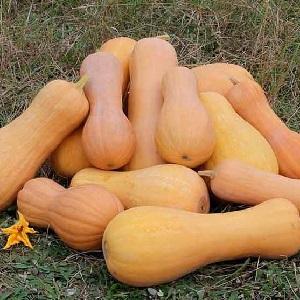 Dmitry, Novosibirsk: “I have been growing only nutmeg varieties for 10 years. I used to plant the Pearl variety, but last year I decided to try Pineapple. I was very pleased, as the taste is excellent, the germination is excellent. Harvested after August 20 and until October ".
Dmitry, Novosibirsk: “I have been growing only nutmeg varieties for 10 years. I used to plant the Pearl variety, but last year I decided to try Pineapple. I was very pleased, as the taste is excellent, the germination is excellent. Harvested after August 20 and until October ".
Olga, Oryol: “I only plant Pineapple seedlings, before that I definitely check for germination and germinate. Requires a little attention to itself, which is a big plus. It tastes like a melon. I prefer to eat a vegetable only fresh, so it retains more benefits and taste. ".
Marina, Yaroslavl: “I planted a pumpkin on good fertilized soil, but after a month the bushes got sick with root rot. She treated with Bordeaux liquid and ash. Due to the disease, the yield decreased significantly, I collected only three pumpkins. I was disappointed ".
Conclusion
It's impossible not to fall in love with Pineapple Pumpkin! It is sweet and tender, perfect for consumption. It is easy to grow a crop, while the yield is high.
Pumpkin is used not only for healing the body, but also for beauty: for example, they make nutritious masks from it. Pineapple is also used as a base for baking. The vegetable makes excellent dietary pumpkin cheesecakes or pies.